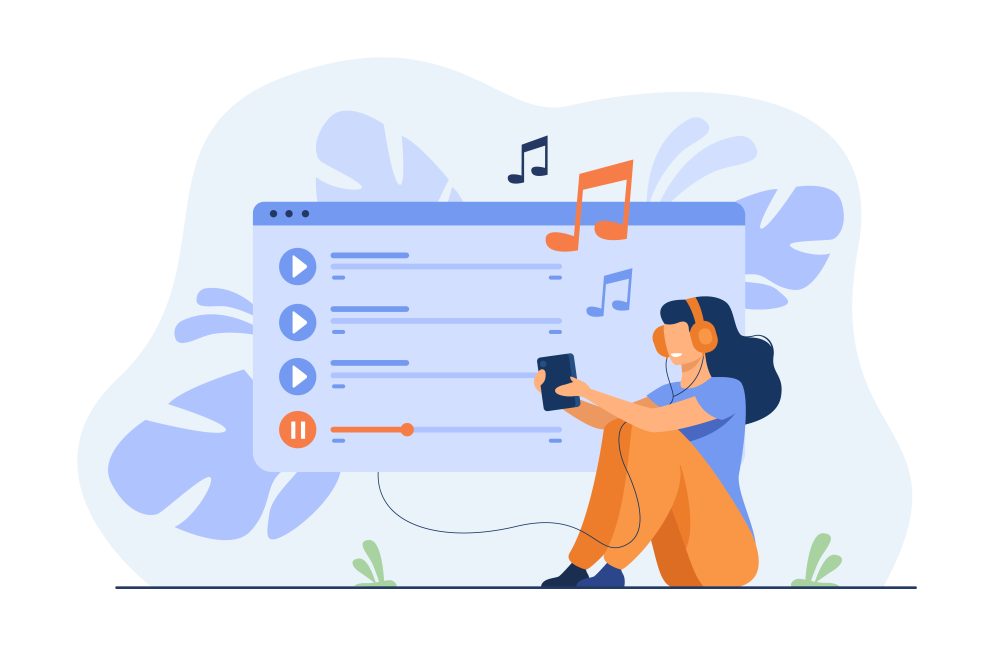Audio-as-a-Service (AaaS) is an AI-based service that provides users with synthetic media and voice cloning to create personalized voice messages and audio tracks.
The Internet of Things, total digitalization, and e-commerce have introduced changes in the general user experience to enable greater interactivity. Add to this the automation of repetitive processes and you will begin to understand why chatbots are now more in demand than a traditional support center. And what’s more, virtual assistants have begun to replace consultants.
In order to change the general user experience, certain technologies are needed to make the process of generating customized content easier, faster, and more affordable. In this case, it is voice content that has become one of the most in-demand products on the market. Thankfully, voice cloning tech allows individual content creators to scale up production at a fraction of the traditional operating costs.
What is behind the demand for Audio-as-a-Service?
Over the past few years, communication via voice messaging has not only grown in popularity but has also become the primary means of communication between customers.
While there are a number of reasons for this, the main ones are:
- People stay at home and work remotely due to quarantine measures preventing them from meeting in person.
- Electronic devices, smartphones, and laptops are now available to most people.
- The evolution of cloud computing and audio processing platforms that are easy to integrate.
- People are constantly looking for other communication mediums due to the average person’s growing number of online correspondence.
- People are tired of Zoom, other video conferencing platforms, and video content consumption in general. Podcasts are booming.
Social audio enables a person to understand the context of current events on a deeper level. In most cases, being able to understand what a person is saying is highly dependent on hearing intonation. Text correspondence does not provide this kind of opportunity.
Although video calling is a popular means of communication, social applications still have significant drawbacks. Video calling makes people distracted. Talkers pay more attention to how they look and what is happening in the background.
On the other hand, social audio is just a voice. You don’t have to bother with how you look or think about what’s going on in the background. Social audio allows companies to communicate with customers on a human level.
Audio-as-a-Service employs voice cloning to empower affordable content production at scale
The most impactful features of Audio-as-a-Service and voice cloning for film, gaming, social media, and advertising are:
- With voice cloning, you can duplicate the voice of any person. This became vital during the COVID-19 pandemic when voice actors weren’t available, even when a project was in dire need of their assistance. But an AI voice generator solved that by synthesizing unlimited audio content from digital clips of their voice.
- You can target distinct audiences with custom localization and dubbing of your audio content. You can produce messages in various languages and foreign countries. With AI voice cloning, you can dub speech into any language you need without reaching out to voice actors.
- Voice cloning can duplicate children’s voices, often used in various ads. Since working with a child is a demanding process, voice cloning can perfectly clone a child’s voice.
- You can use the voices of celebrities from the past to add a sense of historical significance to your project. Synthesized speech can give old voices new life and make your messages far more authentic.
So how does the technology work? In short, you can take any voice (celebrity, voice actor, anyone) and feed it to the AI. The machine learning-based system analyzes the voice and creates a model in such a way that, in the end, even the system itself cannot distinguish the original from the synthetic voice. You can then take the voice recording and have the AI convert it into the target voice, whose model was previously created.
One person’s speech can serve as a source for the generation of dozens of unique voices, regardless of gender, age, or speaker’s accent.
In conclusion
Voice cloning software is becoming the go-to tool for companies looking to improve the way they communicate with customers. With the help of such platforms, companies will be able to clone the voices of various actors and famous personalities with their approval as well as dub audio and video in different languages.
All this introduces greater capabilities to Audio-as-a-Service, making the latter one of the most in-demand trends in marketing, customer service, sales, and entertainment. If you’re looking for more information on the technology and its implementation for your business, don’t hesitate to reach out to Respeecher today.













Add Comment